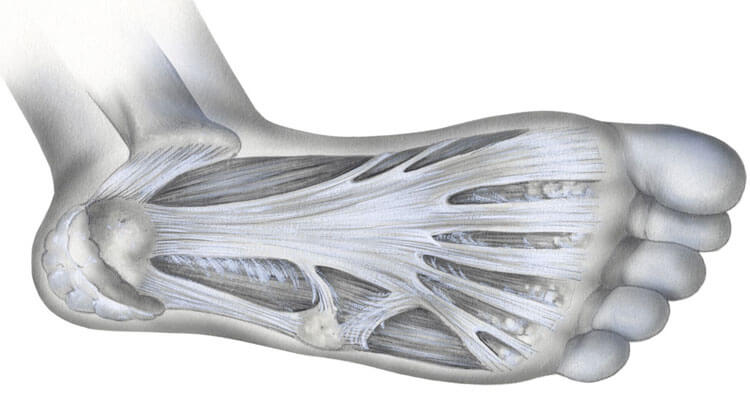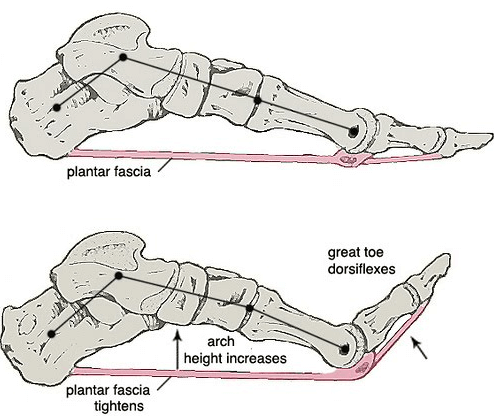Muscle Pain and Tendinopathy
Spotlight On The Plantar Fascia
What Is The Plantar Fascia?
The word fascia owes its origin to the Latin language, meaning “a band”, a layer of fibrous connective tissue surrounding different structures of the body including organs, nerves, muscles, bones… Specifically the plantar fascia is the fibrous tissue layer beneath the skin on the sole of the foot anatomically referred to as the plantar surface of the foot. The plantar fascia, also referred to as the plantar aponeurosis supports the arch of the foot, connecting the heel bone to the toes and is a thick band of longitudinally extended collagen fibers originating from the medial calcaneal tubercle of the heel bone down the foot towards the toes. As it extends down towards the toes, the plantar aponeurosis divides into five separate bands, with each band extending onto each of the five toes.
The plantar fascia is divided into a few parts, the thickest of which, the central part which is the most important both functionally and structurally to the foot. The relatively thinner medial and lateral parts of the plantar aponeurosis over lie muscles of the big toe and little toe respectively.
The Function Of The Plantar Fascia
In weight bearing vertical forces from your body travel downward and ground reaction forces travel upward. Such forces work to flatten the medial longitudinal arch visualized in the image below. The plantar aponeurosis is suggested to form a tie-rod running from the heel to the toes helping contribute to the support, shock absorption and dynamics of this arch during weight bearing activities. Working to stabilize the arch of the foot whilst allowing flexion of the big toe, enabling the big toe joint to carry the majority of your body weight.
The windlass mechanism is used to describe the function of the plantar fascia and medial arch support under weight bearing. “Windlass” is the tightening of a rope or cable. Put briefly, during the pushing off phase of walking the shortening of the plantar fascia resulting in lifting of the arch and shortening of the foot, is the essence of the windlass mechanism principle.
Injury To The Plantar Aponeurosis
Injury to the plantar aponeurosis is common in athletes and general population alike. The location most often affected is at the proximal attachment to the calcaneus (at the heel). Gradual onset or degenerative injuries to the plantar fascia typically referred to as plantar fasciitis are a common cause of heel pain. Degenerative issues of the plantar aponeurosis at and near its origin occur more regularly than tears or injury further down the foot in what is referred to as the “body” of the plantar fascia.
Disclaimer: Sydney Physio Clinic does not endorse any treatments, procedures, products mentioned. This information is provided as an educational service and is not intended to serve as medical advice. Anyone seeking specific orthopaedic advice or assistance on Spotlight On The Plantar Fascia should consult his or her general practitioner, sports medicine specialist, physiotherapist or otherwise appropriately skilled practitioner.



